This is a continuation of testing of the following macro lenses :
- Sony 90mm f/2.8 FE Macro
- Leica 100mm f/2.8 Apo Macro-Elmarit-R
- Zeiss 100mm f/2 Makro-Planar ZF
- Nikon 105mm f/2.8 Micro-Nikkor G VR
The test starts here:
I’m now going to redo the resolution and longitudinal chromatic aberration (LoCA) comparisons I dis a few posts ago, but I’m going to add in the Coastal 60mm f/4 for comparison. The Coastal is an outlier design, with negligible LoCA and modest resolution at the widest two stops, and I think it’s useful to see how it compares with the lenses that are the actual subjects of this test.
Here’s the LoCA comparison:
As you can see, the Coastal is another category entirely from the other four lenses except at f/11. It is interesting that the LoCA increases monotonically as you stop down.
Now lets see how the resolution compares in each raw channel.
The red channel is usually the weakest for resolution in lenses with moderate or considerable LoCA, so looking at this channel shows the Coastal at its best. Even so, it is in fourth place at f/4, and fifth at f/5.6. It is the winner at f/8 and f/11. The differences at f/11 are striking, since all the others are bunched tightly together. [Edit: I later found out that my copy of the Coastal 60/4 was about a stop faster than the indicated f-stop when stopped down.)]
The other two channels;
There are some differences, but the same trends apply.
And now, the white-balanced results from MTF Mapper, which I haven’t yet shown for any of the lenses:
This shows the Coastal at its best, since all of the raw channels pretty much peak at the same place, which is distinctly not true for the other lenses. Even so, the differences are not huge. The Coastal is fourth at f/4 and f/5.6, and wins at the other two common stops.
Are these differences material to normal photography? Maybe, maybe not. The Sony is a clear winner at f/2.8 and f/4. However, at those stops and macro distances, depth of field is paper thin, so you can only take advantage of the Sony’s superiority by focus stacking or using focus bracketing on a flat subject. Macro lenses are often used stopped down, so the Coastal’s small win at f/8 and clear one at f/11 might make it the most useful lens. It’s low LoCA is icing on the cake.
[below is an addition]
It has come to my atention that my copy of the CO 60 doesn’t stop down in actuality as fast as the ring says it does. So for that lens, the f/8 results should probably replace the f/4 ones above, and the f/11 results the f/8 onces above.
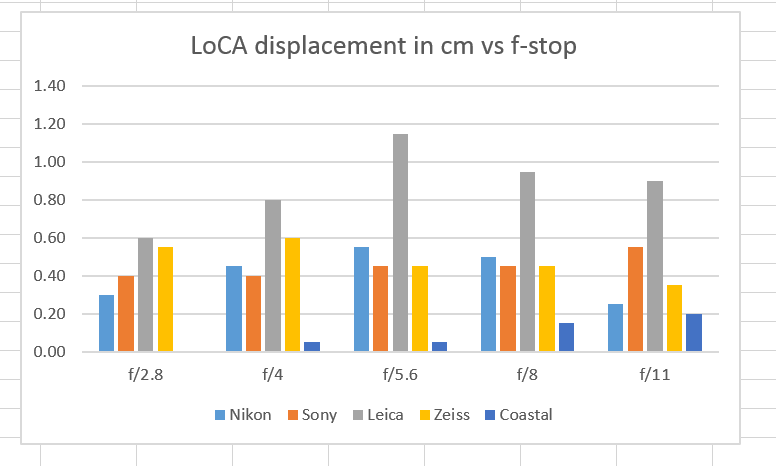
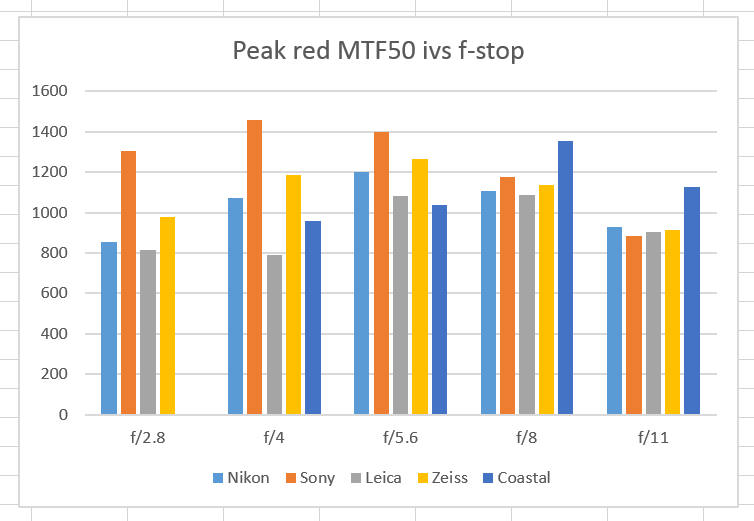
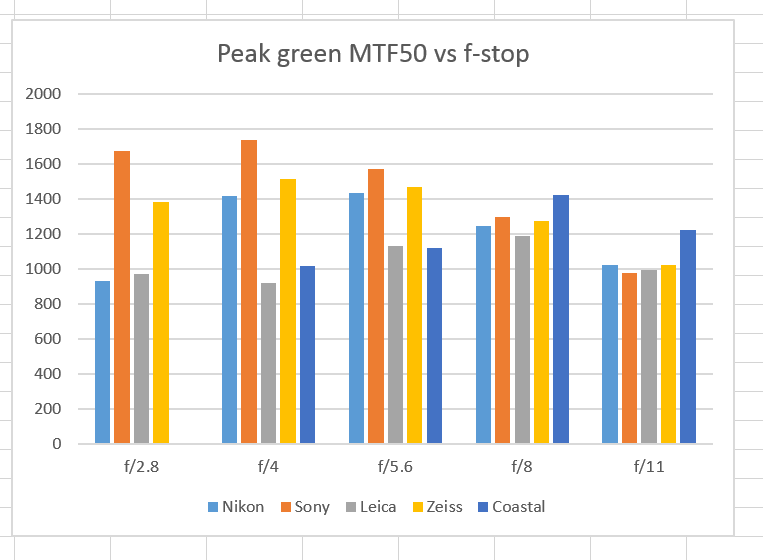
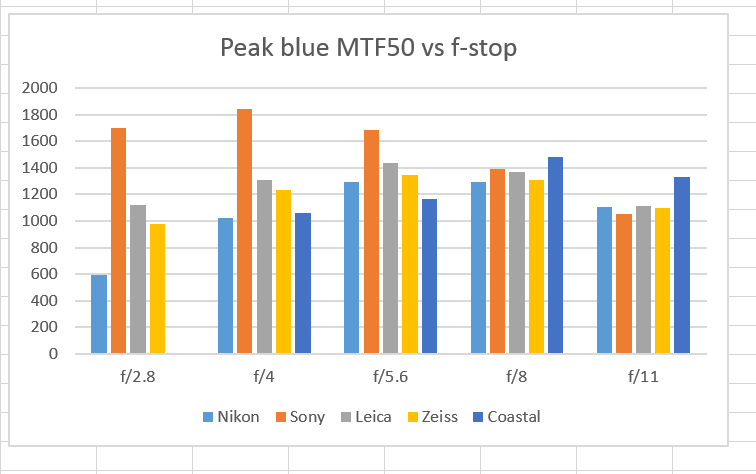
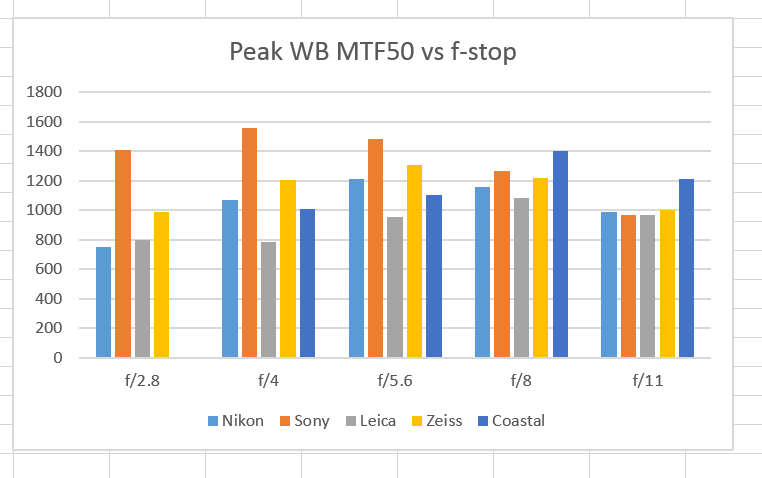
[…] corrected for UR and UV wavelengths as well as visible ones. I’ve tested it several times (here, here, and here), and found that it is pretty sharp, but not astoundingly so. The 120/4 would walk […]